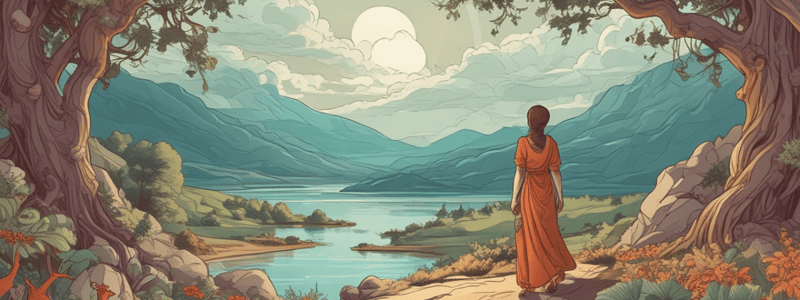Podcast
Questions and Answers
When two plates meet, their interactions can result in various geological ______.
When two plates meet, their interactions can result in various geological ______.
phenomena
Divergent boundaries are responsible for the continuous ______ and formation of Earth's crust.
Divergent boundaries are responsible for the continuous ______ and formation of Earth's crust.
reshaping
Transform boundaries occur when two plates slide past each other ______.
Transform boundaries occur when two plates slide past each other ______.
horizontally
The locations of mountain ranges, deep ocean trenches, ocean floor structures, ______ and volcanos all occur in patterns.
The locations of mountain ranges, deep ocean trenches, ocean floor structures, ______ and volcanos all occur in patterns.
By understanding more about plate tectonics we can have a better understanding of the patterns that occur on ______.
By understanding more about plate tectonics we can have a better understanding of the patterns that occur on ______.
Flashcards are hidden until you start studying
Study Notes
Tectonic Plates
- Earth's surface is divided into large, moving pieces called tectonic plates that constantly shift and interact with each other.
- Plate tectonics explain phenomena like earthquakes, volcanoes, and mountain formation.
Introduction to Tectonic Plates
- Tectonic plates are large pieces of the Earth's lithosphere that move over the asthenosphere.
- The Earth is a giant puzzle made of several tectonic plates that fit together like a jigsaw, forming the lithosphere.
Continental Plates VS Oceanic Plates
- Continental plates are massive, rigid slabs of rock that form the Earth's continents, thicker and less dense.
- Oceanic plates are large, rigid slabs of rock that form the ocean floor, thinner and denser.
How Tectonic Plates Move
- Beneath the plates lies a hot, soft layer of the mantle called the asthenosphere, which acts as a giant, slow-moving conveyor belt.
- The heat from Earth's core causes the asthenosphere to move in currents, dragging the tectonic plates above them, slowly shifting them across the Earth's surface.
Plate Boundaries
- Three types of plate boundaries: Convergent, Divergent, and Transform.
- Convergent boundaries: plates move towards each other, resulting in geological phenomena like mountain formation, volcanic activity, and earthquakes.
- Divergent boundaries: plates move away from each other, creating new crust as magma rises from the mantle, solidifies, and forms new oceanic crust.
- Transform boundaries: plates slide past each other horizontally, causing earthquakes as the plates grind against each other.
Examples of Plate Boundaries
- Convergent: continental plates collide (e.g., the Himalayas).
- Divergent: new oceanic crust forms (e.g., Mid-Atlantic Ridge).
- Transform: plates rub against each other (e.g., San Andreas Fault).
Why Plate Tectonics Matter
- Understanding plate tectonics helps us understand patterns on Earth, such as the locations of mountain ranges, deep ocean trenches, ocean floor structures, earthquakes, and volcanoes.
- By understanding plate tectonics, we can better understand the patterns that occur on Earth.
Studying That Suits You
Use AI to generate personalized quizzes and flashcards to suit your learning preferences.


